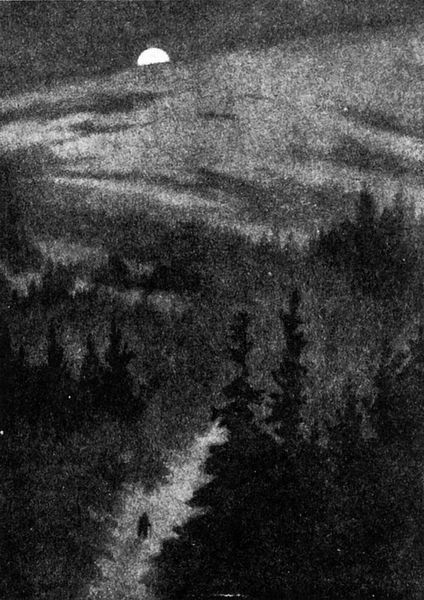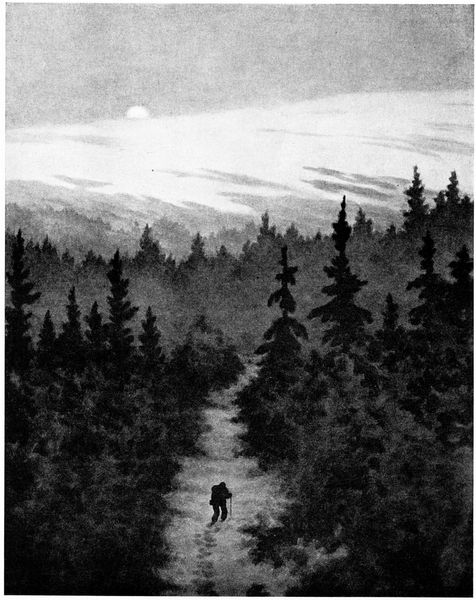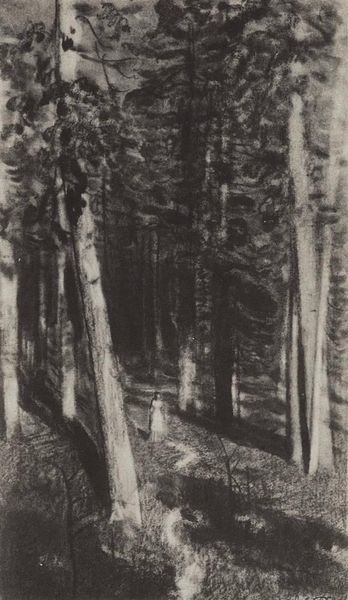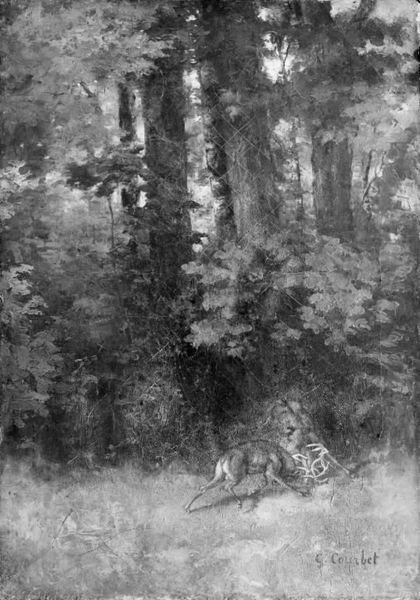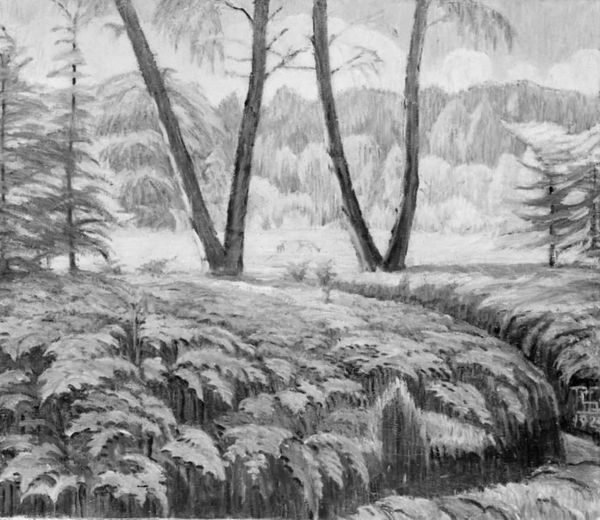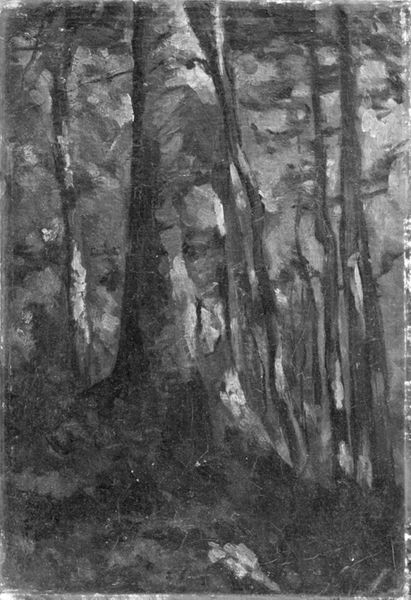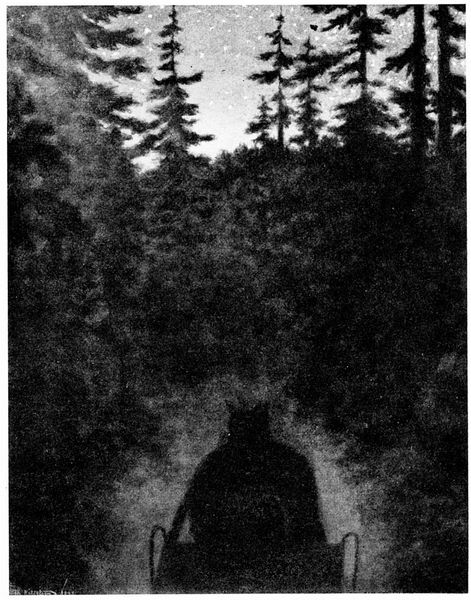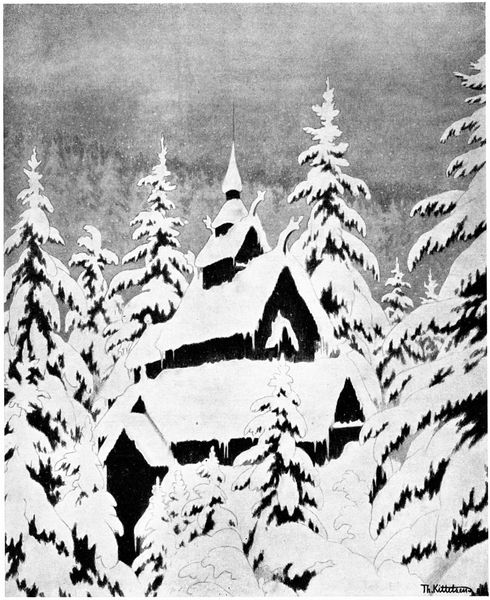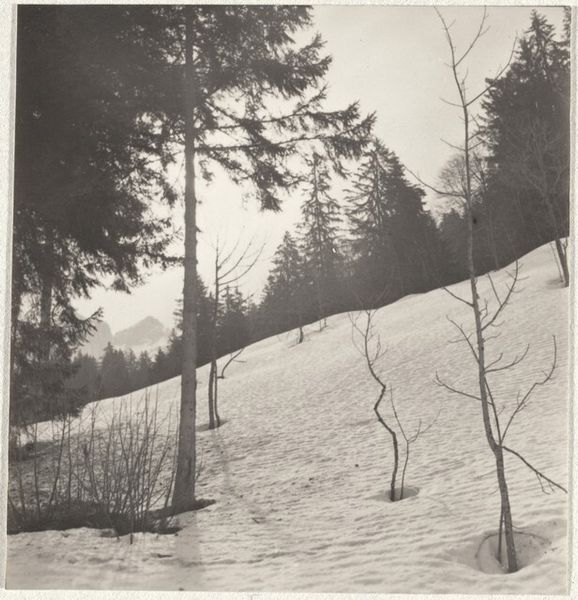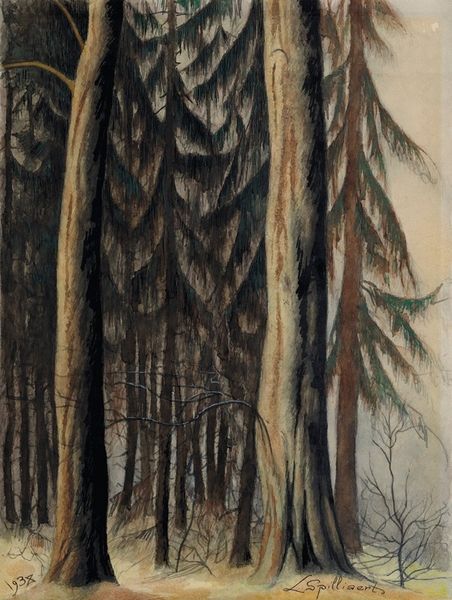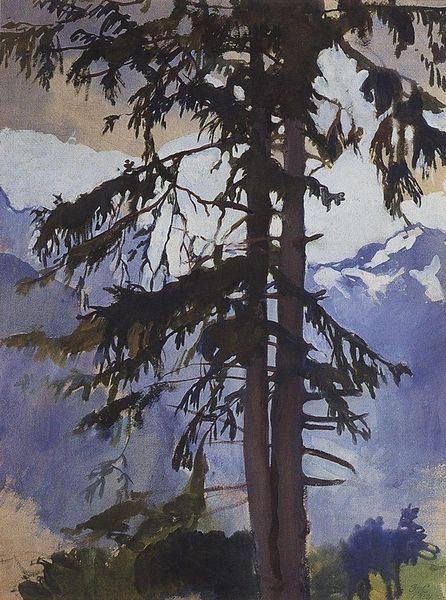
Copyright: Public domain
Editor: This is "Black Grouse" by Theodor Severin Kittelsen, created around 1900, using woodcut as the medium. I find it so striking—the stark contrast between light and shadow gives it an almost mystical feeling. What catches your eye? How do you interpret this work? Curator: I see a powerful intersection of nature and Nordic folklore. The grouse itself, perched within the tree against a starry sky, becomes a symbol. Consider the grouse: it's a creature deeply tied to the land, but here it's elevated, almost spiritual. The stark woodcut style enhances this, doesn't it? The use of black and white evokes primal feelings, connecting us to ancestral memories of harsh landscapes and the creatures inhabiting them. Does the silhouetted form of the bird seem ominous to you? Editor: Ominous, yes, but also strangely protective. The way it's positioned in the tree almost suggests it’s guarding the forest below. And the darkness does give it this very old-world sensibility. Curator: Precisely. Kittelsen frequently used animal imagery to explore the human condition and our relationship with nature. He tapped into deeply rooted cultural anxieties and beliefs. Consider the way that light breaks through the treeline... doesn't it seem symbolic? Editor: Definitely, it feels as though there's a deeper meaning to the whole composition—almost like the break of dawn amidst some deeper conflict. Thanks so much for the insight! It helps highlight those connections that deepen appreciation for art. Curator: My pleasure! Seeing art as a cultural artifact allows us to recognize that objects can encapsulate cultural continuity through inherited symbolism.
Comments
No comments
Be the first to comment and join the conversation on the ultimate creative platform.
